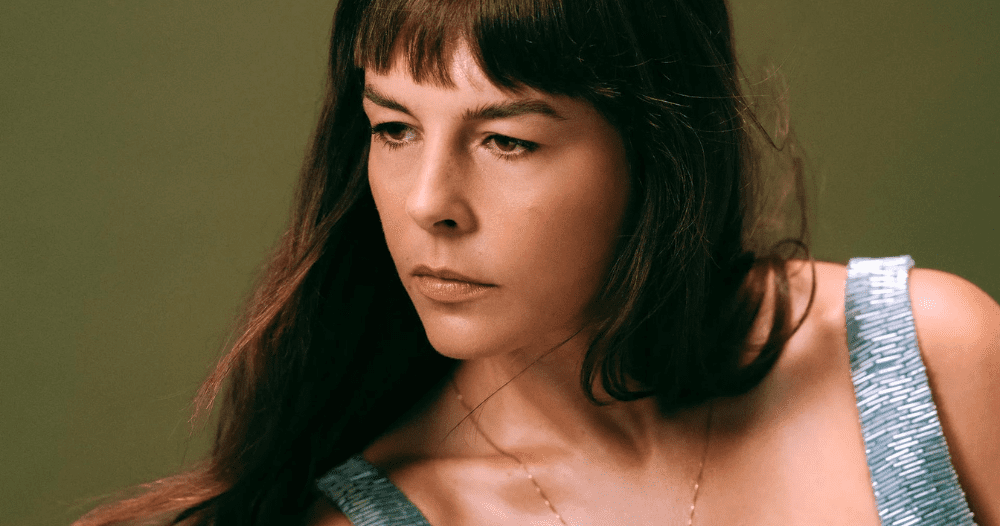Exhausted but determined, Madi Diaz sits down for a chat before her Kessler Theater show in Dallas. Fresh off a demanding SXSW experience, she speaks with an emotional honesty that mirrors the themes in her music. Our conversation centers on the female artists who have inspired her career.
One adage often rings true when discussing women in music: “You can’t be it if you can’t see it.” Diaz’s show that night reflected this. The audience skewed younger and more fashion-forward than usual, many likely discovering her while opening for Harry Styles on his 2022 tour. A core element of Diaz’s appeal lies in her vulnerability, her ability to capture raw emotions. This is precisely what drew her to Joni Mitchell.
“Joni Mitchell? It’s self-evident, isn’t it?” says Madi Diaz, acknowledging Mitchell’s influence. “She’s a powerhouse with a razor-sharp tongue and a gift for crafting melodies. She cuts straight to the core.” Diaz’s own lyricism echoes Mitchell’s poetic style, adept at painting vivid pictures with words. She references Mitchell’s “The Last Time I Saw Richard,” where Mitchell describes herself as “a dark cocoon before I get my gorgeous wings and fly away.” This sentiment resonates with Diaz’s own lyrics in “Get to Know Me” from Weird Faith: “Sometimes I find a pillow and I empty out my lungs / I keep my room dark enough to obscure skeletons.”
It was Diaz’s father, the inspiration for her song “God Person,” who introduced her to Mitchell’s masterpiece, Blue. “It was always playing in the background,” she recalls, “the soundtrack to long drives.” Blue also became the soundtrack to a Los Angeles heartbreak after her move from Nashville. Listening to the album initially became a form of self-inflicted pain. However, Diaz has reclaimed both Mitchell and Blue, weaving them back into her own narrative.
Another artist who resonated deeply with Diaz was Kathleen Edwards, whom she encountered at an intimate SXSW showcase. Edwards, lauded by Rolling Stone and the Austin Chronicle for her exceptional performance, had stepped away from music for several years. Diaz highlights “For the Record,” the closing track on Edwards’ 2012 album Voyager, as particularly meaningful. “I’ve been a fan since I was a teenager,” Diaz says. “‘For the record I only wanted to sing songs’ – that line carries so much weight. It resonated deeply with me at SXSW. It’s a fantastic festival, but it can be brutal for musicians. That line captures the essence of it all. We’re here to make music, to sing songs.”
Edwards wouldn’t release another album until 2020, choosing to open a coffee shop named Quitters during her hiatus. Diaz and Edwards, despite having mutual friends, only crossed paths at this SXSW showcase. “When Kathleen started playing,” Diaz says, her voice catching with emotion, “the second she opened her mouth to sing, it was so powerful. Hearing that voice, a voice that’s been a part of my life for so long, just singing 15 feet away – it was cathartic.”
Kathleen Hanna, the fierce leader of Bikini Kill and Le Tigre, is another pillar in Diaz’s musical foundation. “She’s so important,” Madi Diaz emphasizes, “a force to be reckoned with, even now. Kathleen has this incredible ability to remind you of your own strength, that you are a living, breathing work of art.” The influence of Hanna shines through in Diaz’s live performance of “Think Of Me” from History Of A Feeling. At the Kessler, the energy shifts as Diaz strums her guitar, reaching the line “I hope you f*ck her with your eyes closed” before raising both hands in a defiant double middle finger salute. The instrumentation may be light and folksy, but the sentiment aligns perfectly with the raw power of riot grrrl.
“Kate Bush,” Diaz continues, acknowledging not just Bush’s artistry but her often-overlooked production prowess. “Another phoenix,” Madi Diaz declares, referencing Bush’s recent resurgence in pop culture. “She’s a singular talent, driving her own path, writing her own music, creating her own art, calling the shots on her own terms.”
Bush’s theatricality comes to mind when witnessing Diaz’s transformation of the Kessler stage. While typically a venue for acoustic performances with minimal set design, Diaz completely reshaped the space. A backdrop adorned with a Persian rug, a turquoise rug framing her microphone, and twinkling blue Christmas lights – a unique aesthetic that stood out in the venue.






